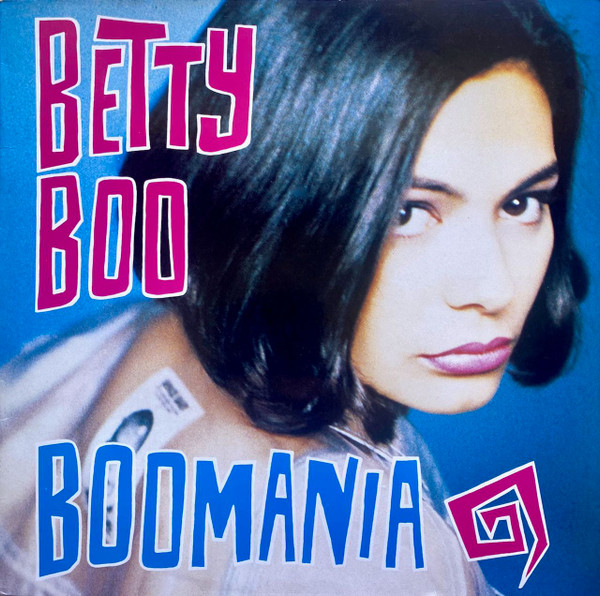
In 1990 I turned 30, and 30 tends to be a major road-bump in many rock critic trajectories, the age when people who write about music start to wonder whether they’re in it for the long haul or they should switch to a more grown-up profession. I clearly chose the former, but not without the usual period of generational skepticism about where music was heading. Undoubtedly, I rejected more records at the time than deserved to be rejected. In general, I’d probably say I was feeling the doldrums about it all.
And clearly I wasn’t alone. “According to many respondents, 1990 was the latest in the endless line of worst years ever,” Robert Christgau wrote in his Village Voice Pazz & Jop poll essay, headlined “Hard News in a Soft Year” since everybody else’s music headlines all of a sudden seemed to revolve around “reported, even investigated ‘stories’ instead of celeb profiles or (ugh) reviews;” i.e., Milli Vanilli lip-synching and 2 Live Crew targeted by censors. Plus, “for many critics, especially sharp young ones and bitter old ones, 1990 seemed like a turning point. Something is happening, and nobody really knows what it is.”
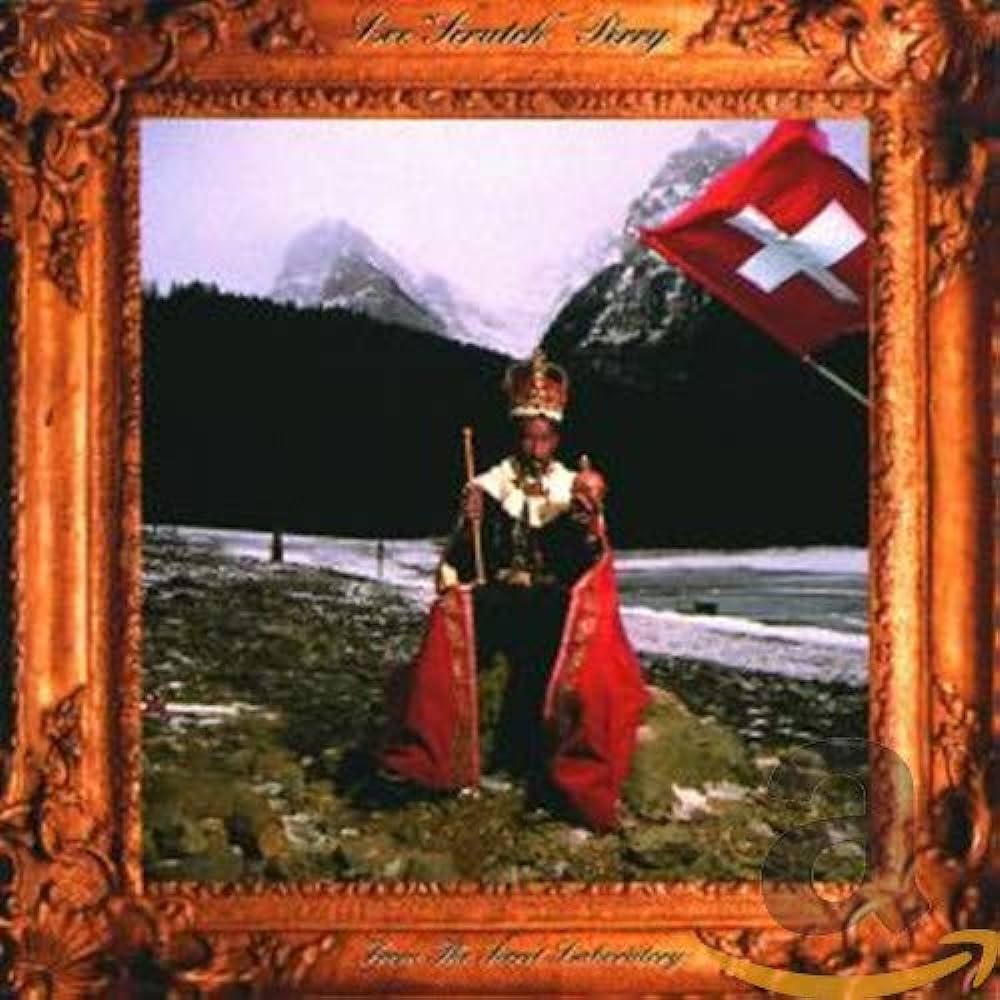
A few had theories, though — often involving formats a/k/a delivery systems. “Recordings,” Jon Pareles wrote in the New York Times, were “generally available, perhaps for the last time, on LP, cassette and CD.” (Oddly, 34 years later, I just now read in the Times that the new Taylor Swift album comes out today in all three.) And in fact the times were already a changin’ — Vanilla Ice’s eternally maligned To the Extreme, Rob Tannenbaum reported in something apparently called The Newpaper (not sure what that was but I’ve somehow saved the page — looks like the Boston Phoenix to me), “is also the first release ever to top the charts while unavailable on vinyl.”
This distinction was in addition to Ice following M.C. Hammer’s 21 weeks atop the Billboard 200, the first time two rappers ever did that back-to-back. Which didn’t make the tastemakers all that optimistic, either. “The power-ballad crooners, dance-pop chirpers and rap boasters who monopolize MTV can, and will, be replaced fast,” Pareles predicted in a different year-end Times wrapup. “It’s hard to imagine people rushing, a few years from now, to buy the digital audio tape reissue of the Nelson album that’s selling so well at the moment.” And he was right! And not only because….wait, what was digital audio tape again? (Nelson, for their part, were the twin, long-haired pretty-boy blonde sons of earlier hearthtrob Ricky Nelson, and presumably who Pareles had in mind when he scoffed at how “heavy metal provided the wardrobe for young men who want to sing sentimental pop ballads.”)
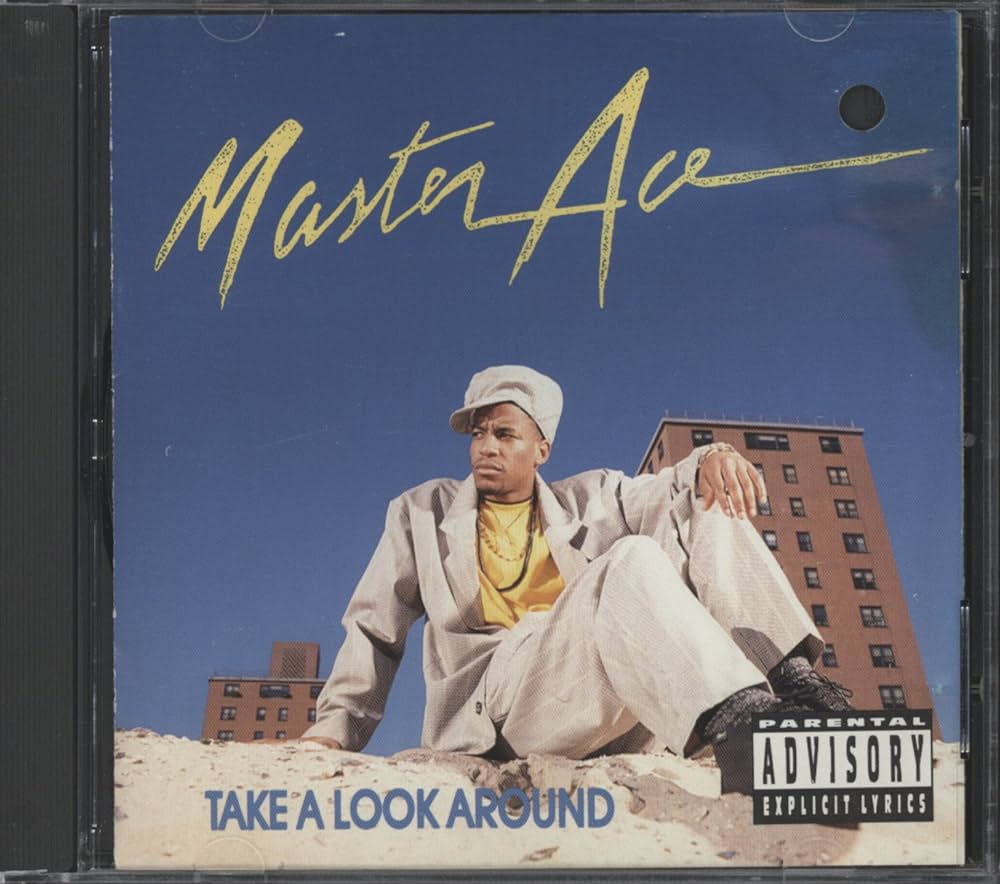
In the Philadelphia Inquirer, Tom Moon observed that “apart from the firestorm that surrounded voluntary labeling of so-called offensive albums, this year’s stories all were related to the increasingly manipulative hit-making elite,” whose “hype-machine efforts resulted in a brand of pseudo-pop that devalued the work of earnest singers and songwriters even as it exponentially outgrossed them.” His exhibits, besides the obligatory Vanilla and Vanilli and Hammer, included Mariah Carey, Wilson Phillips, Michael Bolton, Janet Jackson (who “relied on lip-synching to help produce a high-energy dance review masquerading as a pop concert”), New Kids on the Block (“who sang without prerecorded vocals at their recent Spectrum show, and in the process revealed their voices to be quite unpleasant” — pop stars can’t win, can they?) and r&b boy band Perfect Gentlemen, who honestly I forgot ever existed.
Similarly, Pareles fretted that “at video-style concerts by performers like Janet Jackson, New Kids on the Block and M.C. Hammer, dancing was more important than singing, and the singing was often on tape.” Which led to a situation where “mechanized music loses the physical connection of performer to instrument, while fabricated lead vocals, all multi-racked and pitch-shifted and reconstituted, also remove the personal touch. Who would fantasize about a machine?” Just wait ’til these guys hear about AutoTune! And techno, for that matter.
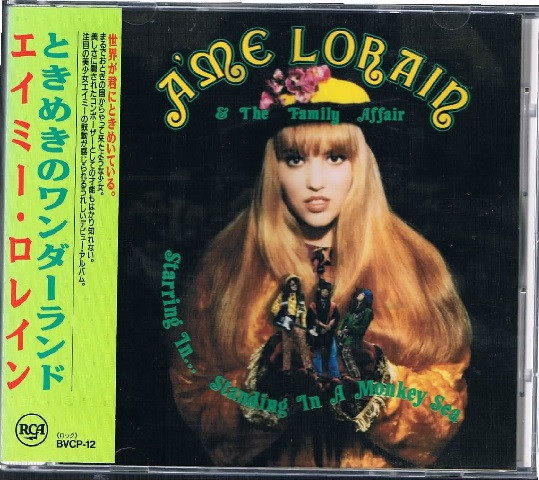
Which, again, isn’t to deny I was jading out in my own right. I absolutely was — though not necessarily in exactly the same way. As a late-blooming, late-Booming pre-Generation Xer (born 1960, which I still say should make me Generation Brady), cynicism about ’90s music came naturally to me. The schtick has served me well over the decades. I was sincerely convinced at the time, and to a certain extent still am, that alt, indie, metal, hip-hop and r&b (for starters) had taken wrong turns on the way to the 20th century’s final decade.
Here I am in a Pazz & Jop comment back then, chronicling a software purge I’ve regretted ever since even as round-the-clock streaming and concern for retirement savings occasion me to consider yet another one soon: “I bought a CD player, and thereby cured my vinyl fetish, and I figured out once and for all that if music isn’t good enough to make me into a raving lunatic fan, it really ain’t worth my time. So I cleared 1000 or so albums out of my house, including bloody near all the jazz ‘n blues; if I only liked one or two cuts, I taped ’em. I decided the perfect record is by its nature imperfect [34-years-on interjection: Am I tying myself in knots here on purpose? Did I demand albums to be consistent or not??] It makes all kind of messes, contradicts itself all over the place, sounds smart and stupid at the same time, tries to be everything at once. It raises questions, suggests possibilities.”
Which is either confusing or appropriate (or maybe just appropriately confusing), since I seemed convinced that some of the best rock at the time was making smart-and-stupid contradictory everything-at-once messes galore: “Judging from 1990 output by everybody from Warrant to Too Much Joy to Mordred to Young Gods [interjection: mostly with albums that technically preceded 1990], it’s obvious guitar rock’s future will entail quick-change hip-hop bricolage ideas or else. So far, this move is at best a pretentiously eclectic diversion. When it turns into pop music, it might start meaning something.” (Spoiler: probably never happened, to the extent that I even understand my prediction.)
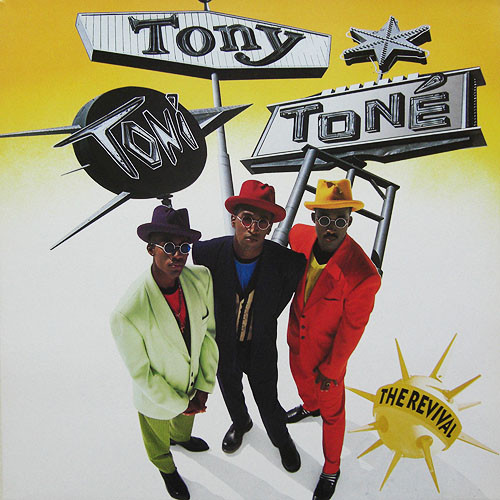
Or as Pareles put it, “new songs don’t just roll along in one mode but zap between textures, tempos and emotions so fast that some listeners risk whiplash injuries. Rap showed the way with its disc-jockey collages, but now even bands that play instruments are beginning to record songs that sound like hyperactive metal/rap/pop /reggae/funk medleys.” Tom Moon, meanwhile, praised “Faith No More, whose deconstructive approach to guitar riffing was equaled only by its ability to turn rock, funk and rap into something distinctive rather than a mash.” And Christgau noted both the “junk syncretism (kitchen-sink eclecticism? styleless mish-mash?) of Jane’s Addiction” and “jagged pretentious art-rock” of Living Colour. So no wonder I decided a prog revival was happening — maybe even an okay one.
See, there was also this artsy little band from Seattle that somehow wound up having a top 10 pop hit and topping Billboard‘s mainstream rock chart…and before then, nobody expected Queensrÿche would ever do that! “Silent Lucidity” sounded a whole lot like Pink Floyd’s “Comfortably Numb,” and all in all it really was just one more brick in the wall. In June of 1990, Harper’s magazine reported, the National Association of Brick Layers presented MTV with an honor roll of recent music videos “most effective in promoting the brick industry” — clips such as Hammer’s “U Can’t Touch This’ (“has one minute and two seconds of beautiful brick scenes”), Elton John’s “Club at the End of the Street” (“animated video uses meticulous detail in texturizing the brick and mortar portions”), Paula Abdul’s “Opposites Attract” (“blends the seriousness of brick into this whimsically delightful video”), German industrial troupe Nitzer Ebb’s “Lightning Man” (“captures the feel of old Europe with this…almost all-brick, black-and-white short”) and above all Bell Biv Devoe’s first-place “Poison” (whose “haunting melody, combined with stark brick walls and pavers, makes the video a hit among masons everywhere.”) Not making this up! Those bricklayers were mighty mighty, just lettin’ it all hang out.
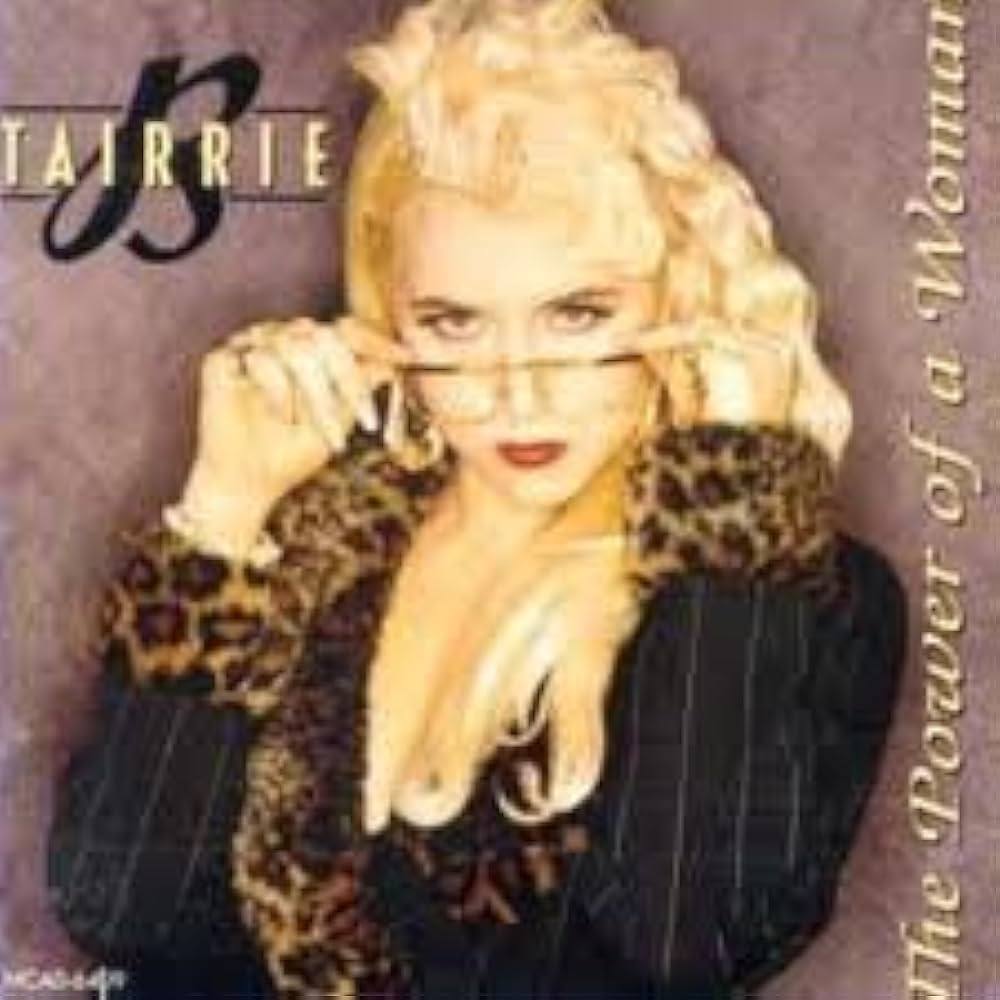
I mean, c’mon folks — it helps to have a sense of humor about this sort of thing. Another example: While music critics fretted about the deceit and artifice of Frank Farian charges Fab Morvan and Rob Pilatus, as I noted in another P&J comment (which surely would have mentioned blackface if that had been on offer, right?), “the profusion of Milli Vanillis in Philly’s New Years Day Mummers Parade indicates that these talented subversives have already become folk anti-heroes, to the extent that their dreadlocked visages and household name will outlive any conspiracy ugly industry sleazeballs have trumped up against them. Mark my words, Fab and Rob are due to get the last laugh — fifty years from now, the phrase ‘pulling a Milli Vanilli’ could easily stand alongside ‘Rube Goldberg’ in the American slang lexicon.”
With 16 years left on the ticking half-century clock, maybe that’s not quite necessarily gonna happen after all — but a documentary about the duo supposedly garnered decent reviews at last year’s Tribeca Film Festival, which is vindication enough I’d say. As for 1990 in general, it seems bizarre now to kvetch, as future mystery novelist and fatherhood columnist Rick Shefchik of St. Paul, Minnesota, did in his own P&J blurb, that “1990 was easily the worst year for pop singles since I’ve been participating in this poll” and maybe even “the worst year for singles since 1955.” Then there’s Joe Levy’s condescending P&J finger-wag: “Those who conflate the trivial with the awesome probably got off on the pop charts this year. Shame on them, because nowhere (except maybe in 2 in a Room’s ‘Wiggle It’) did the trivial actually contain anything awesome.”
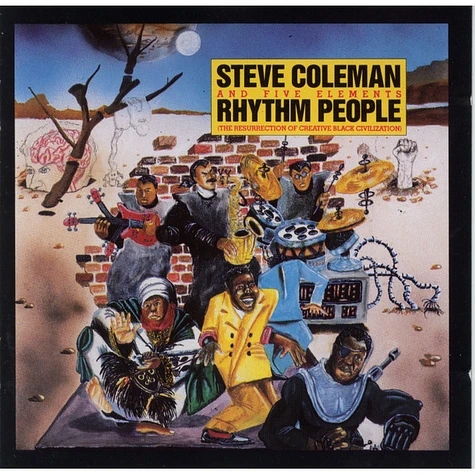
I dunno, “Ice Ice Baby” still sounds hella fun to me, and it’s hardly alone. But “shame” on me for thinking so. At least I’m not Staten Island’s Darren Ressler, who confessed that “1990 was perhaps the first year that I could talk about music with my Top 40 loving twin sister and older sister and actually play a song that we all liked. For the first time ever, we could hop in the car and listen to Soul II Soul or Lisa Stansfield without having World War III over where the radio dial would go. ” Darren Ressler, shame on you for getting along with your sisters!
On the other hand, though it admittedly totally pissed me off at the time and I had no qualms saying so publicly, Levy was probably right to reject the Joan Jett album review I sent him when he was the Voice music editor (a while before I was) sometime in the early ’90s as “perfunctory” and phoned-in — because it probably was. Pretty sure that was 1991 (which would make the album Notorious), but by 1990 my writing was already deteriorating, at the Voice included. Seems like I was struggling to find music I enjoyed enough to write about in any kind of coherent or interesting manner — a shame given the generous list below. Rightly or wrongly, I actually gave a few of these albums highly ambivalent (at best) reviews when they came out — most memorably, where Internet trolls are concerned, A Tribe Called Quest and Depeche Mode and Cinderella in Rolling Stone.
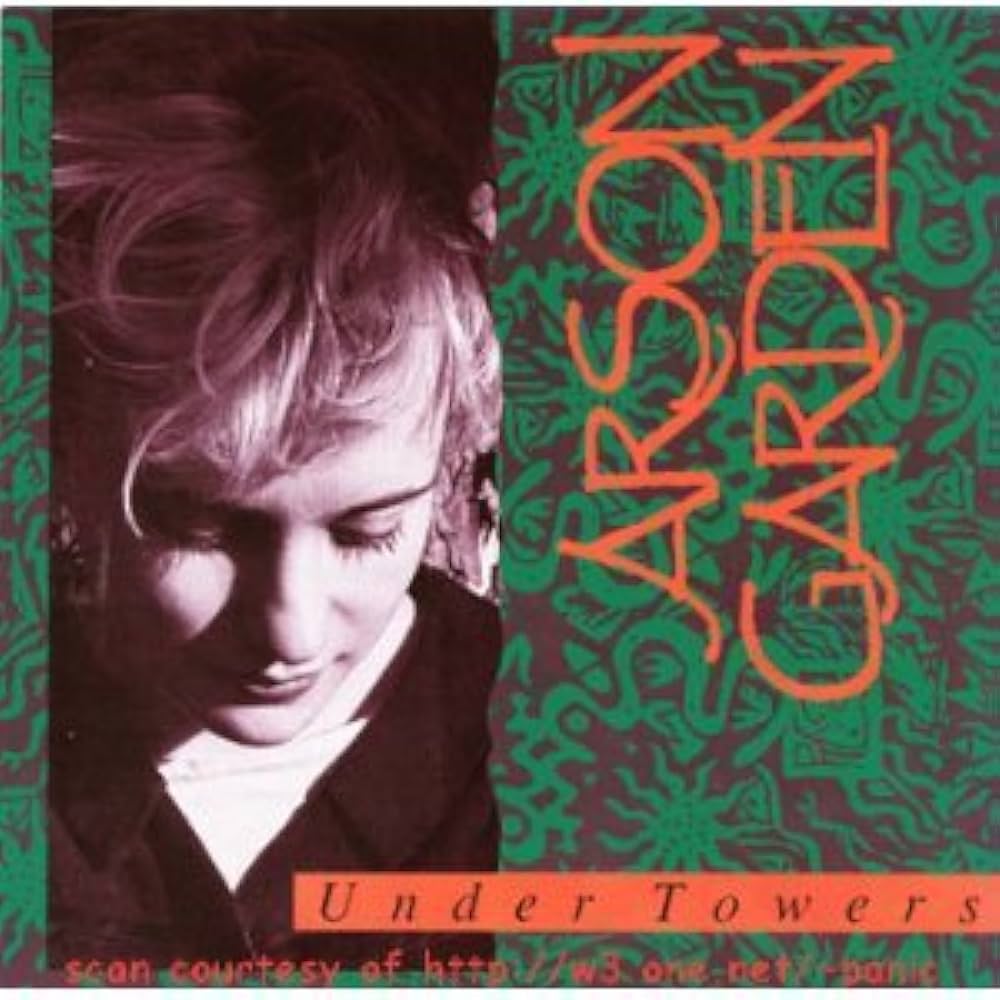
But what strikes me more is how much music from this smack-dab center of what Alfred Soto calls the Poppy Bush Interzone has been unjustly forgotten. Perhaps it has something to do with being caught amid the just-pre-digital transition from soon-landfilling cassettes to eventually landfilling CDs, but several of my picks fell through the cracks not long after they fell from the sky. Tastemaker memories are clearly either very selective or very short. Neither the Sisters of Mercy nor Was (Not Was) nor Eddy Grant, hardly obscure acts, managed an entry in either 1995’s Spin Alternative Record Guide or 1997’s The Trouser Press Guide to ’90s Rock. Nor did Information Society (too late maybe) or the Notwist (too early?) And that was over a quarter century ago. Yet compared to probably at least half the artists on the list below, including several pop and rock bands I was obsessed with at the time from Romance-language countries, those five acts qualify as household names. Liquid Jesus and Fobia never stood a chance.
Biggest surprise is how many albums with loud guitars wound in my top 150 — More than a few of those self-conscious post-glam proto-grunge prog-thrash art-metal whatchamacallit types, but also Love/Hate, Jet Circus, Warrant, Electric Angels and a slightly bluesier Cinderella keeping a toe or two planted in the glorious ’80s days of high-to-the-sky hair, while Redd Kross and Mother Love Bone hit their hard glitter target from the flipside of home plate. Then there’s Philly powerpopper Tommy Conwell shuffling late ’70s Robert Palmer with mid ’80s Replacements; and Arson Garden, Dustdevils, and Of Cabbages and Kings all making better Sonic Youth albums, to my ears, than Sonic Youth’s Goo; and hot rookies Pavement possibly teaching Nirvana how to rip off Boston — on a 7-inch vinyl EP, no less.

Plenty of other entities, though, relied more on electronic instruments — approximately half of them aggressive enough to be considered industrial at the time, or if not that at least Belgian newbeat or sampladelic or breakbeat rave (a 1990 world Frank Kogan blogged about a while back that I’m still mostly oblivious to). There’s a smattering of collegiate Afrocentric rappers picking colorfully aging daisies while doing the humpty hump, and teenage Miami-bass duo Young & Restless driving B Girls to a toga party (“Louie Louie” isn’t the song you hope but “Poison Ivy” is), and Brit bird Betty Boo doing the do because people like you put her off her food, and future Tragedy Khadafi Intelligent Hoodlum saying incredibly unintelligent stuff about abortion laws but sounding surprisingly great anyway. (Hey, maybe he qualifies as a guilty pleasure. Though then again the Sex Pistols and Graham Parker both took home the Pazz & Jop pennant in their anti-choice years, so at least there’s a precedent.)
Liz Torres split the difference between New York Latin freestyle and Chicago house, while Lisa M and Timmy T and Linear and impossible Nietzsche disciples Will to Power mapped out Latin freestyle’s next step, while C&C Music Factory and Snap! mixed house and hip-hop into chart-busting radio pop. Information Society, Cetu Javu, Pet Shop Boys, Depeche Mode, Propaganda, the Beloved and Candyflip demonstrated pre-techno techno-pop’s staying power, and ’80s stalwarts L.L. Cool J and Madonna did more than just hang in there.

All things considered, “pop” seemed in better shape than “rock.” In an ’80s overview in Request magazine’s January 1990 issue, I’d suggested rock-as-such was on its last legs, and hip-hop not far behind: “Rap and disco are the only musics where anything’s allowed to happen just for the hell of it anymore. Disco (you know, house or freestyle or techno) is more viable than rap; rap peaked early on, and it’s been hobbling ever since it got wind of its own self-importance.” And especially in regards to rock a year before it sniffed teen spirt, I wasn’t alone either. Bill Holdship, at the end of 1990: “Within five years, there’s going to be a new generation for whom guitars, bass, and drums (sex, drugs, and rock’n’roll) aren’t going to mean much.” Gina Arnold, same time: “My roommate teaches 7th grade and tells me that her kids think of sloppy long-haired guy bands with guitar players in them like how we thought of Patti Page or Pat Boone.”
Rob Tannenbaum flat-out laid down the gauntlet: “Name a great new American rock and roll band. Sorry, that’s not fair, Name a good new American rock and roll band. If one one springs to mind in less than a minute, it only proves that ‘good’ doesn’t mean what it used to.” Rock, he too insisted, just wasn’t where the action was anymore; “for years, it’s been obvious to anyone without an emotional or financial stake in the issue” that college-radio-style alt- rock had been spinning its wheels, resting on its laurels, basically on life support, while “on any kind of objective yardstick, the good or great new acts of 1990 were rappers (Digital Underground) or Europeans who love dope beats (Beats International, Lisa Stansfield, Black Box, Urban Dance Squad), each constructing something fun and ecumenical — and you bet, funky — out of multiple influences and cultures.” (Urban Dance Squad, no less! Not to mention Lisa Stansfield inventing Adele as surely as, say, Celine Dion was inventing Adele!)

Joe Levy, on the other hand, rebutted in the P&J section with a half-page essay called “Indie-Semi-Whatever Nation,” arguing that Pooh Sticks, Sun City Girls, Pavement, Babes in Toyland, Fugazi, Prong, Barbara Manning, Railroad Jerk, Velvet Monkeys (whose early ’80s stuff actually sounds excellent to me these days by the way — early ’90s not so much), Pounding Serfs and so on were good if not great after all. (What, no Claw Hammer, Tragic Mulatto, Caroliner Rainbow or Sister Ray??) He’s borderline prescient here; see if you can figure out how: “Dead? Exhausted? Doesn’t explain Superchunk, Teenage Fanclub, or Nirvana, all of whom mine empty shafts for scattered flashes of guitar brilliance, and all of whom nearly cracked the Pazz & Jop singles top 25 with barely distributed indie seven-inches.”
Still, “for the first time since the early ’60s, rock is no longer the dominant pop music form,” as Keith Moerer put it in Request, a development he attributed at least in large part to “our increasingly polyglot youth culture (with Asian, black and Hispanic audiences growing faster than the once-dominant white population.)” 52 whole weeks went by without even one guitar band topping Billlboard‘s album chart, breaking a winning streak dating back to the year Ed Sullivan welcomed the Beatles.
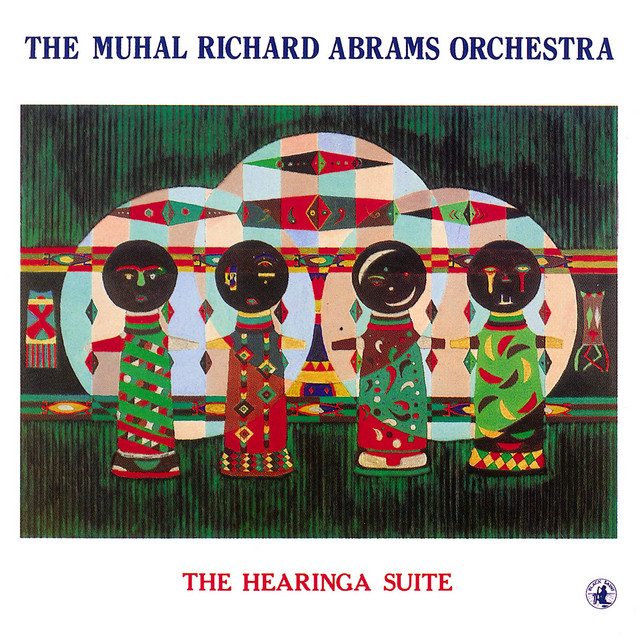
Where a guitar album did place first was in the Pazz & Jop poll (not to mention much smaller Request and Bay Area Music polls.) The culprit? Ragged Glory by 45-year-old Neil Young, which as far as I can tell is…an okay Neil Young record. Bill Holdship, writing in B.A.M., said he heard the album as addressing “an underlying morality (and sense of purpose) that popular music has lost in every conceivable way, shape and form.” Greil Marcus suggested in the Voice that everybody was paying too much attention to “Fucking Up” (because swear word) and Young’s cover of the Premiers’ “Farmer John” when they should have been paying attention to “Over and Over” and (of course, check the title, we’re talking Greil Marcus here after all) “Mansion on the Hill.” I would have guessed “Country Home” and “Days That Used to Be” were the standouts and much of the rest (over and over indeed) almost as perfunctory as my Joan Jett review; shows what I know. Christgau figured the album “makes good on several potent fantasies — eternal renewal, the garage as underground, the guitar as shibboleth and idea.” None of which, let’s say, particularly persuade me.
Second place in all the polls was Sinead O’Connor’s I Do Not Want What I Haven’t Got, which I actually only recently remembered that I reviewed, not all that positively, for Request at the time. Mark Kemp, in a P&J comment, loses me on “the sincerest grouping of ‘into the mystics’ lyrics since Astral Weeks” (an album that disappointed Van fan Metal Mike Saunders once told me nobody but Lester Bangs ever actually listened to back in ’68/’69 — hey, I wasn’t there so I wouldn’t know.) My own comment inadvertently answered Kemp’s claim: “Sinead O’Connor had a huge smash with an embalmed ballad that combined the worst of Michael Bolton with the worst of Julee Cruise, and she made a video where she just stood there. She boycotted Dice Clay, called Aerosmith ‘sexist,’ then told Rolling Stone that NWA were right up her flight of stairs. Hope the P&J electorate explains why I’m supposed to be impressed — these ‘spiritual salvation’ things always go over my head.” Pretty sure Tom Moon meant a compliment when he referred to her “slow-torture reading of Prince’s ‘Nothing Compares 2 U,” but for me that hit the nail smack-dab on the bald head. On the other hand, I do still like “Black Boys on Mopeds,” and even more so the defiant “Emperor’s New Clothes,” and the Middle Eastern stuff in “I Am Stretched On Your Grave” after she stops singing. There you go.
I also approved of her politics, up to and including her view of the Vatican, and I suppose I can understand propping her up in what people clearly considered a tumultuous year — Christgau called the first gulf war “the most disastrous event of my conscious lifetime,” though I wonder how many years it took for that record to break. (26 max I bet, though 13 seems almost as undeniable. Do I hear 11?)

Here’s my own long-winded and rather stilted attempt to get topical, again from 1990’s P&J section: “My favorite sample of the year was the Cool Hand Luke one that kicks off ‘Civil War’ by Guns N’ Roses: ‘What we’ve got here is a failure to communicate,’ it goes, a half-hearted apology for ‘One in a Million’ in precisely the same way that [Public Enemy’s] ‘Welcome to the Terrordome’ was a half-hearted apology for [Professor] Griff, except with GnR nobody paid attention. ‘Civil War’ was never released as a single, but it entered people’s lives like one. Though its consciousness-raising might mark the beginning of GnR’s end, there’s no question that this epic bloodbath was 1990’s most powerful piece of music — besides being the only marriage of Funhouse and Freewheelin’ Dylan I’ve ever heard, it came closer than anything else to addressing the state of the nation in this dangerous year. When Axl yodels about young men dying the way they’ve always done before, he’s presaging Kuwait whether he knew it at the time or not, but the real civil war he’s sandblasting involves S&L cheats vs. taxpayers, populists vs. technocrats, Exxon vs. draft-age male America, homelessness vs. wealth, rock vs. disco, Roe vs. Wade, Eros vs. Thanatos, pornographers vs. censors, greybeards vs. whippersnappers, WASPs vs. Asians vs. Blacks vs. Jews. Over to Paul Berman: ‘Or who can say anymore what our divisions are, except that they persist, like some guerilla war that has festered in the jungle unto the second generation’.”
Or in other words: CAN’T WE ALL JUST GET ALONG, MAAAN? As if polarization was ever the crux, even if the current surprise box-office cinema success that just happens to share its title with that old GnR epic still suggests it does. I’ll leave it for you to parse which parts of my spiel are the most full of shit — and which parts aren’t. Do it while checking out music I recommend below, you get bonus points.

- Will To Power Journey Home (Epic)
- Liz Torres The Queen is in the House (Jive)
- L.L. Cool J Mama Said Knock You Out (Def Jam)
- Love/Hate Black Out in the Red Room (Columbia)
- Steve Coleman and Five Elements Rhythm People: The Resurrection of Creative Black Civilization (Norvus)
- Information Society Hack (Tommy Boy)
- Sun Ra Purple Night (A&M)
- Noir Désir Du Ciment Sous Les Plaines (Barclay France)
- Xuxa Xuxa 5 (SomLivre Brazil)
- Transilience Mouthful of Buildings (Tapestry Platypus Canada)
- Pop-Rai and Rachid Style (Earthworks/Virgin)
- Sonny Sharrock Band Highlife (Enemy Germany)
- Yalla: Hitlist Egypt (Mango)
- K.T. Oslin Love in a Small Town (RCA)
- Jean Leloup L’Amour Est Sans Pitié (Audigram Canada)
- Brand Nubian One For All (Elektra)
- Joe Diffie A Thousand Winding Roads (Epic)
- Frederic Rzewski The People United Will Never Be Defeated! (Edizioni Di Cultura Popolare Italy)
- The Ex Dead Fish (Ex Netherlands EP)
- Mary Chapin-Carpenter Shooting Straight in the Dark (Columbia)
- The Civil War (Elektra Nonesuch)
- C&C Music Factory Gonna Make You Sweat (Columbia)
- Pauline Oliveros Crone Music (Lovely Music Ltd.)
- Intelligent Hoodlum Intelligent Hoodlum (A&M)
- KMFDM Naive (Wax Trax!)
- Mariah Carey Mariah Carey (Columbia)
- The KLF Chill Out (Wax Trax!)
- Cetu Javu Southern Lands (ZYX)
- Snap! World Power (Logic)
- Niagara Religion (Polydor France)
- Chubb Rock The One (Select)
- Madonna I’m Breathless (Sire/Warner Bros.)
- The Roches We Three Kings (MCA )
- Sandra Paintings in Yellow (Virgin Europe)
- Claw Hammer Claw Hammer (Sympathy for the Record Industry)
- Eddy Grant Barefoot Soldier (Enigma)
- Jon Hassell City: Works of Fiction (Opal/Warner Bros.)
- Lee Scratch Perry From the Secret Laboratory (Mango))
- Gary Clail and On-U Sound System End of the Century Party (On-U Sound UK)
- Liquid Jesus Live (Triple X)
- Betty Boo Boomania (Sire/Rhythm King)
- African Head Charge Songs of Praise (On-U Sound UK)
- Anacrusis Reason (Metal Blade/Restless)
- Pavement Demolition Plot J-7 (Drag City EP)
- Jack DeJohnette Parallel Realities (MCA)
- Yvonna Chaka Chaka Be Proud to be African (Dephen South Africa)
- Garth Brooks No Fences (Capitol)
- The Muhal Richard Abrams Orchestra The Hearinga Suite (Black Saint Italy)
- Musique D’Express (Polygram)
- Adventures of Stevie V Adventures of Stevie V (Mercury)
- That’s Eurobeat (Super Cassette Industries India)
- Elmer Food Beat 30cm (Polydor/Off the Track France)
- Pet Shop Boys Behavior (EMI)
- The Notwist The Notwist (Subway Germany)
- Ronald Shannon Jackson Red Warrior (Axiom)
- Tragic Mulatto Chartreue Toulouse (Alternative Tentacles)
- Precious Metal Precious Metal (Chameleon)
- Caroliner Rainbow Stewed Animal Skins I’m Armed With Quarts of Blood (Subterrranean)
- Už Jsme Doma Uprostřed Slov/In the Middle of Words (Globus International Czechoslovakia)
- Don Pullen Random Thoughts (Blue Note)
- Monie Love Down to Earth (Warner Bros./Eternal)
- Caifanes El Diablito (RCA)
- Pauline Ester Le Monde Est Fou (Polydor France)
- Lisa M Flavor of the Latin (Sony Discos)
- Poor Righteous Teachers Holy Intellect (Profile)
- Bez Ladu A Skladu Bez Ladu A Skladu (Opus Czechoslovakia)
- Eric B. and Rakim Let the Rhythm Hit ‘Em (MCA)
- Obliveon From This Day Forward (Active UK)
- David Murray Spirituals (DIW Japan)
- Abbey Lincoln The World is Falling Down (Verve)
- Jet Circus Step On It (Word/Epic)
- Fobia Fobia (Ariola)
- Public Enemy Fear of a Black Planet (Def Jam/Columbia)
- Riot The Privilege of Power (CBS Associated)
- Meat Beat Manifesto 99% (Mute)
- Ten City State of Mind (Atlantic)
- MC Tunes The Nation at Its Heights (ZTT/WEA Europe)
- Final Cut Deep Into the Cut (Full Effect)
- Clint Black Put Yourself in My Shoes (RCA)
- Macka B Natural Suntan (Ariwa)
- Mind Over 4 The Goddess (Caroline)
- Martine St. Clair Caribou (Les Productions Guy Cloutier Canada)
- Los Prisioneros Corazones (Capitol/EMI Latin)
- A Split Second Kiss of Fury (Antler Subway)
- A Tribe Called Quest People’s Instinctive Travels and the Paths of Rhythm (Jive)
- Mekong Delta Dances of Death And Other Walking Shadows (Aaarrg Germany)
- 808 State Utd. State 90 (Tommy Boy)
- Manilla Road The Courts of Chaos (Black Dragon France)
- Redd Kross Third Eye (Atlantic)
- The Sisters of Mercy Vision Thing (Elektra)
- Depeche Mode Violator (Sire)
- Shazzy Attitude: A Hip Hop Rapsody (Elektra)
- Propaganda 1234 (Virgin)
- Masta Ace Take a Look Around (Cold Chillin’/Reprise)
- Pharoah Sanders Moon Child (Jazz Heritage)
- Digital Underground Sex Packets (Tommy Boy)
- Thomas Mapfumo & the Blacks Unlimited Chamunorwa (Chimurenga Zimbabwe)
- Indochine Le Baiser (Ariola Canada)
- Sister Ray To Spite My Face (Resonance)
- Arson Garden Under Towers (Community 3)
- Milton Nascimento Txai (Discos CBS Brazil)
- Eugene Chadbourne/Elliot Sharp/Sun City Girls Country Music in the World of Islam (Fundamental)
- Warrant Cherry Pie (Columbia)
- Carter the Unstoppable Sex Machine 101 Damnations (Chrysalis)
- Cinderella Heartbreak Station (Mercury)
- Course of Empire Course of Empire (Carpe Diem)
- Danielle Dax Blast the Human Flower (Sire/Warner Bros.)
- Carlene Carter I Fell in Love (Reprise)
- Tairrie B The Power of a Woman (Comptown/MCA)
- Celtic Frost Vanity/Nemesis (RCA Victor)
- Tony Toni Toné The Revival (Wing)
- Electric Angels Electric Angels (Atlantic)
- Brenda Fassie Black President (Mercury Nigeria)
- The Beloved Happiness (Atlantic)
- Dustdevils Struggling Electric and Chemical (Matador/Teenbeat)
- Wee Papa Girl Rappers Be Aware (Jive UK)
- Azalia Snail Snailbait (Albertine)
- Of Cabbages and Kings Basic Pain Basic Pleasure (Triple X)
- Enigma MCMXC A.D. (Charisma)
- Mitsou Terre Des Hommes (Les Disques Isba Canada)
- A’me Lorain & the Family Affair Standing in a Monkey Sea (RCA)
- Beats International Let Them Eat Bingo (Elektra/Go! Beat)
- Mother Love Bone Apple (Polydor)
- Renegade Soundwave In Dub (Mute/Elektra)
- Was (Not Was) Are You Okay? (Chrysalis)
- Inner City Fire (Virgin)
- Neil Young & Crazy Horse Ragged Glory (Geffen)
- Euro-K Euro-K (Profile)
- Tiamat Sumerian City (C.M.F.T. Productions UK)
- En Vogue Born to Sing (Atlantic)
- Helios Creed Boxing the Clown (Amphetamine Reptile)
- El Ultimo De La Fila Nuevo Pequeño Catáloco de Seres y Esteres (Perro Spain)
- T. Graham Brown Bumper to Bumper (Capitol Nashville)
- Loose Ends Look How Long (MCA)
- Sing Loud Play Strong (Central Australian Aboriginal Music Association Australia)
- Victims Family White Bread Blues (Mordam/Konkurrel)
- Candy Flip Madstock: The Continuing Adventures of Bubblecar Fish (Atlantic/Debut)
- Ska Beats, Vol. 1 (ROIR)
- Black Box Dreamland (Deconstruction/RCA)
- Midnight Oil Blue Sky Mining (Columbia/Sprint)
- The Party The Party (Hollywood)
- Tommy Conwell and the Young Rumblers Guitar Trouble (Columbia)
- A Lighter Shade of Brown Brown & Proud (Pump)
- Young and Restless Something to Get You Hyped (Pandisc)
- Queensrÿche Empire (EMI)
- Timmy T Time After Time (Quality)
- Boredoms Soul Discharge (Shimmy-Disc EP)
- Linear Linear (Atlantic)
- Alisa Randolph Alisa Randolph (Atlantic)
- Trouble Trouble (Def American)

via facebook
Steve Pick
Man, I had turned 30 13 & 1/2 months before 1990 started, and I remember being as excited about music as I had ever been – I think I first became cynical the morning after Nirvana appeared on SNL two years later, and really started feeling out of the loop around 1995 or so. But 1990 – every record I recognize on your list, I remember fondly, with the exception of Pavement (and I’m not even certain I actually heard that particular record – I just can’t stand that band, aside from the song about the haircut which I finally succumbed to when it was played at least 150 times on the first ever St. Louis alternative rock radio station later on.)
Here are the albums I most loved in real time 1990, two of which make the bottom 50 of your list: Carlene Carter, Joe Ely live, Brian Eno/John Cale, French Frith Kaiser & Thompson, Gunbunnies, Los Lobos, Van Morrison, Maceo Parker, Dwight Yoakam, Neil Young. That leaves 8 records I still think are pretty darn good I can’t quite figure out why you didn’t like. Oh, well, that’s why they make menus, right? We don’t all have to eat the same thing.
Chuck Eddy
Off hand: Dwight Yoakam came very close; a great singer who often falls just on the wrong side of the monotony line for me. French Frith Kaiser Thompson I forgot about; not sure I’ve ever heard that one, but I probably should (and who knows, maybe I will still). I remember liking Joe Ely’s earlier live album a lot more (it’s one of his best), but I’m not a fan of live albums in general, and by 1990 to be honest I’d mostly lost interest in him. Same with Los Lobos, though I know lots of people value their later albums more than their earlier ones — by the ’90s I was pretty immersed in rock en español, and rightly or wrongly for some reason Los Lobos struck me as corny and obvious in comparison, even when they turned more artsy. (Incidentally, I lost interest in Pavement after their first couple EPs as well, which were noisier and blurrier than their later, more famous stuff — I never even cared about the haircut song, though I did like the one that started “Ice baby, I saw your girlfriend” or whatever and sounded like I think Jim Croce). Not sure I ever even heard *of* the Gunbunnies. As for the rest, hmmm.
Michael Biggs
I am a very big fan of some of Yoakam’s albums. I remember others as being fine but not hitting the same “spot” for me. But I’ve never been aware of “the monotony line”. One of his records I like just fell out of a box and – since it won’t require any search effort from me – I’ll give it some more “listening to” listens and hear what I hear. Of course, it will be only one of many albums and I may have to explore others to do a thorough analysis …but this may be too much beyond the basic quasi-academic investigation in which I usually am prepared to undertake. (There is always something else waiting to be played or a drink to be poured.) Yet I am intrigued.
Alfred Soto
I actually think Los Lobos got better with every album through 1992
Steve Pick
For me, Dwight Yoakam has been consistently good to great for more than 40 years. In fact, the only two career spanning box sets without any single weak moment are his and Willie Nelson’s.
Chuck Eddy
Another thing about Los Lobos is that I’ve never really connected with Hidalgo’s singing. I get the idea people think he’s great. He’s always struck me as pretty humdrum. Functional sure, but mostly just meh.
Alfred Soto
I loved this post, and thanks for the shout out.
Brad Luen
Well now I just want to watch brick-themed music videos for, oh, twenty minutes.
Anyway, the NewPaper was Providence’s alt-weekly, at the time owned but not yet entirely renamed by the Phoenix.
Chuck Eddy
OK, that explains why they looked like identical twins.
Brian O’Neil
I only became cynical when I no longer was able to make trying to work in the music biz in any capacity (writing included but not exclusively) sustainable for me as I coincidentally hit 40.
I got over that when I rationalized that I could experience as much music as ever before, I just needed to pay for it like normal people and I finally had the funds to do so.
As for 1990, I was living in Brooklyn and immersed in as much music as I could get my ears on, working in record stores (Tower in the Village; later Venus Records) and trying very hard to write for anyone who would let me. I was paid for my first bit of writing – a Wrathchild America feature in Creem Metal. I was championing things in metal publications that was not typical, for better or worse.
As such, albums that came out that year dot my lists of greatest things ever that I still play periodically. This list alphabetically includes but is not limited to:
1000 Homo DJs – Supernaut [EP]
Bad Religion – Against the Grain
The Black Crowes – Shake Your Money Maker
Concrete Blonde – Bloodletting
Course of Empire – Course of Empire
The Cramps – Stay Sick!
Helios Creed – Boxing the Clown
Death – Spiritual Healing
Dwarves – Blood Guts & Pussy
Entombed – Left Hand Path
Fields of the Nephilim – Elizium
The Fluid – Glue [EP]
GWAR – Scumdogs of the Universe
The Jesus Lizard – Head
Judas Priest – Painkiller
Killing Joke – Extremities, Dirt and Various Repressed Emotions
King’s X – Faith Hope Love
Lard – The Last Temptation of Reid
Loop – A Gilded Eternity
Lubricated Goat – Psychedelicatessen
Manitoba’s Wild Kingdom – …And You?
Paradise Lost – Lost Paradise
Paris – The Devil Made Me Do It
The Posies – Dear 23
Primus – Frizzle Fry
Prong – Beg to Differ
Redd Kross – Third Eye
Revolting Cocks – Beers, Steers + Queers
Scatterbrain – Here Comes Trouble
Silverfish – Fat Axl
The Sisters of Mercy – Vision Thing
Skinny Puppy – Too Dark Park
Social Distortion – Social Distortion
Sonic Youth – Goo
Testament – Souls of Black
Thee Hypnotics – Come Down Heavy
Trouble – Trouble
John Zorn – Naked City
Christian Iszchak
That national association of brick makers fact!
Jesse Ciucco Velo
Big fan of yours Mr. E.- I wouldn’t want anybody to miss your writings especially when you’re digging so deep. Saludos from East Los, JV
Graham Ashmore
I’m with Greil on “Over and Over”.
Jill Blardinelli
I’m looking forward to hearing TS’s new one this weekend as well as reading about the 1990’s music in your article! By the way, I loved your top country songs of 2023 article. Everyone, even those who think they don’t like country music, will love your article & should look it up.
I’m also on Team Megan as you will see in the very near future when I post my article about what I’ve been listening to in the past year. I was so busy preparing to go back to school that I got way behind on music (but have now really caught up big time!)
Patrick Hould
Dude! Does this mean you’re redoing the entire 90s? Your Quebec picks usually delight me or make me laugh, sometimes both – I hope Jean Leloup’s high placement causes some curious fan of yours to give him a shot, and Martine St-Clair’s “Lavez lavez” was one of the songs I most often heard at my summer camp job that year (the other: “Winds of Change”).
Oh wow, you even removed the 90/91 list from your blog!
Chuck Eddy
Wow, you’re observant! Actually, that post is still on my blog if you really hunt for it, but I did remove the link. And yes, I want ’90s years (and eventually, pre-’70s years) to have individual posts like all the, uh, normal years. No idea how long that will take, but I’m starting to work on it.
Patrick Hould
That’s great news! I was especially surprised that 70 and 71 were combined in the first place.
Chuck Eddy
It’s not like I gave this all that much aforethought. It just kinda happened.
James Auburn Tootle
Ever see this Esquire article where Dave Holmes christens 1989-90 “the Diet Slice” and calls them “The Two Weirdest Years in Music”?
Chuck Eddy
Never saw this before — now you tell me! And who knows, it might have helped! I’ll try to give it a read before I (re)-do 1991, though I dunno, by then all the weirdness might have disappeared. Thanks, either way!
LikeLike